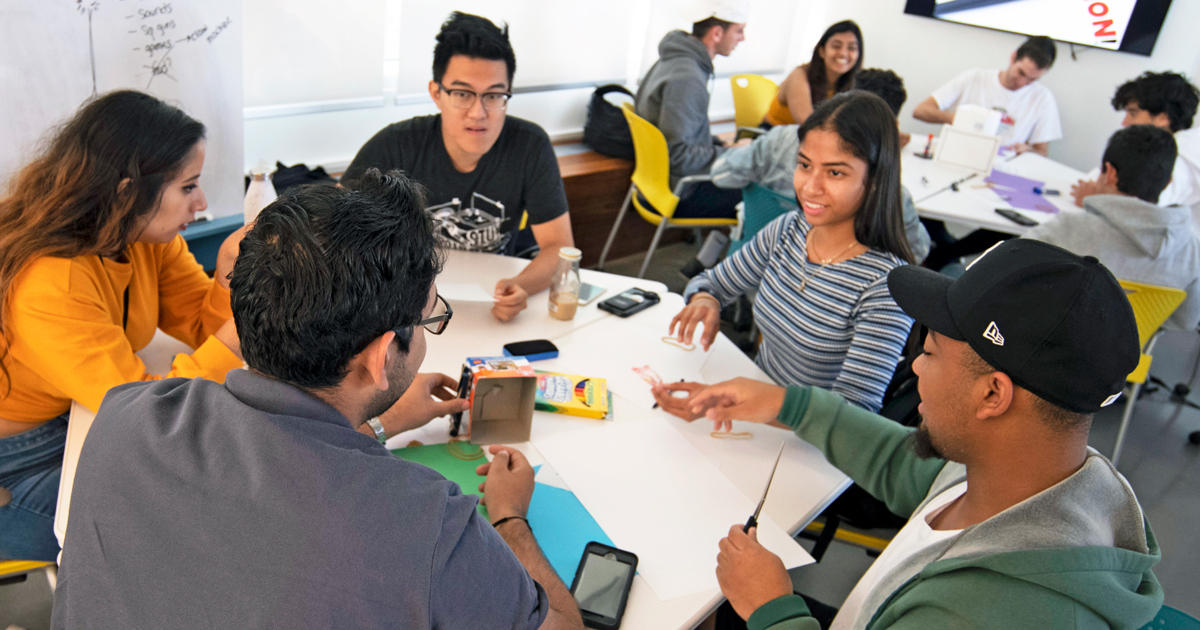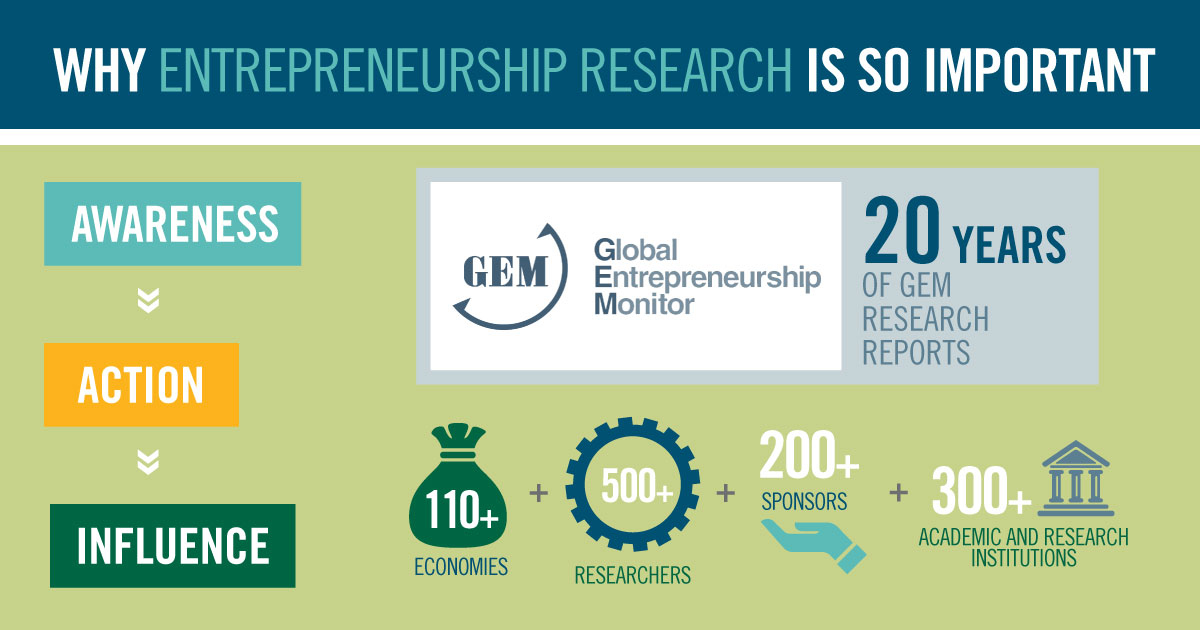Setting the Stage for Startup Success

According to the latest Babson-sponsored U.S. Global Entrepreneurship Monitor (GEM) report, 43 percent of entrepreneurs in innovation-driven economies around the world see opportunities near where they live.* In the U.S., this number is much larger, at an impressive 64 percent.
This difference between the U.S. and its peers suggests a culture that celebrates entrepreneurship, a system made up of support and resources, and, as a result, high opportunity awareness among American entrepreneurs. But, opportunity perception does not necessarily translate into action—or being able to sustain it.
The Diverse Experiences of American Entrepreneurs
GEM enables us to deepen our understanding of entrepreneurial attitudes and behaviors.
As part of a five-part story series, we took a closer look at the nuances of entrepreneurial opportunity for three groups: youth and seniors, women, and diverse ethnicities. We saw underlying differences in how they view entrepreneurship, which ultimately can affect their view of the opportunities and their ambition to act on it.
For youth and senior entrepreneurs, entrepreneurship can seem foreign and unrelatable. Organizations and thought leaders are helping youth and seniors to better see themselves as entrepreneurs. In this way, they are opening the door for them to ideate, innovate, and, in some cases, even collaborate across age groups.
For women entrepreneurs, there is a distinct difference between perceiving opportunity and acting on it. Messages they receive about who is, and isn’t, starting and leading companies may factor into their considerations, and ultimately impact their decisions to not start up. New investors and funding platforms, work organizations, and support structures are helping to reset these messages and break down the barriers for women entrepreneurs.
Lastly, for entrepreneurs of diverse ethnicities, starting a venture is one thing, but sustaining it is another. These entrepreneurs may not have the social and financial capital, as well as the expertise that is critical for business maturation. Programs leveraging multipronged approaches can help to address each of these gaps and to set entrepreneurs on the path to growing their businesses and creating jobs.
A Framework for Fostering Entrepreneurship
Each of these groups can deliver truly unique social and economic value to society via entrepreneurship, but they face many challenges in starting up.
There are a multitude of elements that can affect whether entrepreneurs act on opportunity and are able to successfully sustain their ventures. One framework used to make sense of these elements is the Domains of the Entrepreneurship Ecosystem, created by Daniel Isenberg, founding executive director of the Babson Entrepreneurship Ecosystem Project.
Isenberg recognizes that there are hundreds of elements at work, so he groups them into six major domains: “a conducive culture, enabling policies and leadership, availability of appropriate finance, quality human capital, venture-friendly markets for products, and a range of institutional and infrastructural supports.”
These domains interact, intersect, and overlap, and the ecosystem is highly dynamic and constantly changing.
The Ecosystem and the Entrepreneur
In the ecosystem framework, we see the elements that enable entrepreneurs to act on opportunity and to be supported in their entrepreneurial ventures.
Of course, to see an opportunity in the first place requires a very specific mindset.
In order to act on opportunities, you have to be open and actively pursuing the identification of these opportunities.
Julian Lange, Babson professor and leader of the U.S. GEM team
Lange also called out data pertaining to the reasons for discontinuing a business. Not only do U.S. entrepreneurs see opportunity at rates higher than their international peers, but opportunity continues to be a theme throughout their journeys. While most entrepreneurs outside the U.S. discontinue their businesses because of unprofitability, the primary reason for U.S. entrepreneurs is the pursuit of another opportunity. This is an exciting and optimistic data point about the mindset toward opportunity, and the activity that can ensue.
Isenberg explains opportunity awareness as a contrarian perspective on the part of the entrepreneur: “This perception that you know or have something that others don’t know or have, implies the intrinsically contrarian nature of entrepreneurship, because the perception of opportunity is based on the belief that other potential entrepreneurs either don’t see what you see, and/or view exactly the same situation differently, and/or in fact, until it is too late, perceive your assets or ideas or assessments as relatively worthless, impossible, or stupid.”
Whether we term it as forward thinking and visionary, or contrarian, the unique mindset of the entrepreneur to see opportunity, combined with advantageous conditions to act on it, is powerful alchemy.
What’s Next?
Looking ahead, we anticipate greater interest in understanding the conditions for entrepreneurship.
Recognizing the importance of the ecosystem to startup success, the 2018/2019 Global GEM report introduced a new measure: the National Entrepreneurship Context Index (NECI), a composite score which can be used to evaluate the environment for entrepreneurship. With this index now in place, stakeholders will be able to assess the strength of their environments and to identify the opportunities to improve.
We hope that this new data, along with insights into the unique challenges that face different early-stage entrepreneurs, will provide the impetus to address the weaknesses of the ecosystem and to contribute to a new scenario, in which the entrepreneur, who recognizes opportunity, is energized and empowered to take the first step—and then the next—to start up.
Did you miss Parts 1, 2, 3, or 4 of our series on entrepreneurship opportunity? Catch up on them now.
*Across the 23 innovation-driven global economies surveyed in the 2017 GEM Global report.
Posted in Insights





